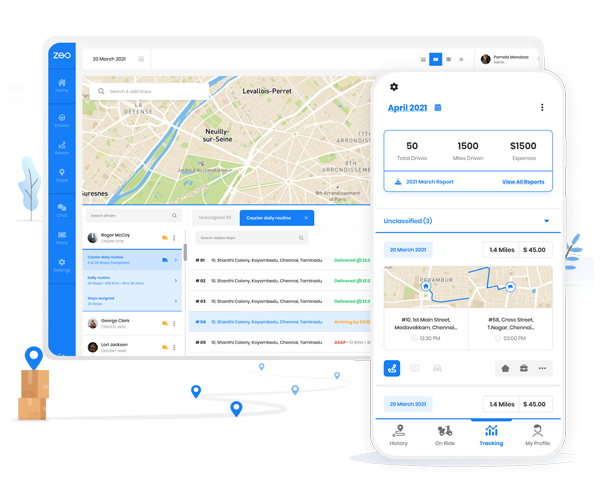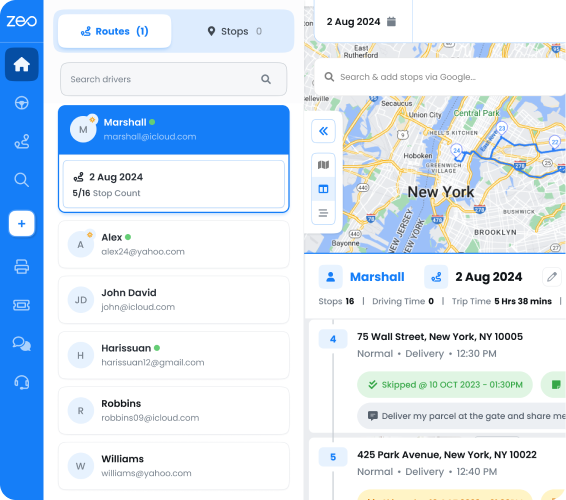Updated on: August 11, 2025
A delivery route could well be your business asset with recurring revenue, fixed obligations, and operational weight. For the right buyer, it becomes a contract-driven logistics stream tied to platform SLAs, territory rules, and driver management.
Most routes come with built-in volume. Some come with vehicles, staff, and direct handover support. Others require starting from scratch with only a contract and expectations.
Further to this, we’ll lay out what’s involved in sourcing, evaluating, and taking over a route. If you’re running logistics already or planning to enter through acquisition, use this as a working reference.
What Does It Take to Buy a Delivery Route in 2025
Buying a route means you get the exclusive right to deliver in a specific area or to a set group of clients. It’s how businesses like FedEx Ground, USPS (through HCRs), and local courier networks assign territory to individual operators.
What you’re buying is access to a steady stream of deliveries and not the trucks or buildings. The route’s value lies in the number of stops it covers, its protection from competition, and its performance over time.
These are the key structures:
- FedEx Ground: The contractor owns the trucks and hires the drivers.FedEx handles scanning, pickup, and payment systems.
- USPS HCRs: These are awarded through bids, where contractors handle rural mail delivery with fixed schedules and volume expectations.
- Amazon DSP: Approved applicants set up a registered business to operate as an Amazon Delivery Service Partner.
Amazon provides branded vans, routing software, and a daily shipment load within a designated service area. The partner manages driver hiring, payroll, vehicle upkeep, and shift scheduling, but has no ownership of the territory or packages.
Key Steps to Buying a Route
There’s a specific process associated with buying a route; steps designed for buyers who plan to own and operate a delivery route as a business.
You’re stepping into a live operation with contracts, coverage zones, delivery targets, and customer expectations already in motion.
-
Identify and Filter Listings
Routes are listed through brokers, marketplaces, and direct contractor networks. Each one has its own rules, delivery platforms, and earnings history — so you’ll need to sort the solid from the risky.
What to look for:
- Routes that match your location, capacity, and management style
- Clear breakdowns of daily stops, service area, and pay structure
- Whether vehicles and drivers are included or you’re starting fresh
- Volume trends across the past year — not just averages
Check platforms like KR Capital, Route Advisors, or BizBuySell. The filters matter just as much as the listing.
-
Evaluate Route Fundamentals
Every route carries financial, legal, and operational obligations. Before making an offer, determine whether this route is viable as a business.
Delivery volume might look good, but what’s the cost of running it day after day? So, focus on workload, cost profile, and risk exposure.
How to implement:
- Review the delivery agreement, SLA terms, and any platform-imposed penalties
- Study net income after key costs (driver pay, fuel, maintenance, platform deductions)
- Check for contract duration, renewal policies, and compliance thresholds
- Interview any retained staff on shift consistency, burnout rate, and turnover
- Assess whether the route has room for optimization (e.g., stop clustering or shift automation)
-
Build the Operating Framework
A delivery route functions only with infrastructure. You’ll need to set up business systems, staff contracts, vehicle access, and delivery software to run independently post-handover.
increase fuel savings
Save 2 Hours on Deliveries, Everyday!
Optimize routes with our algorithm, reducing travel time and costs efficiently.
Get Started for FreeHow to implement:
- Register your business entity and obtain tax, labor, and transport registrations
- Secure vehicles through lease, loan, or asset purchase
- Hire drivers with route-ready experience; ensure backup coverage for each shift
- Set up insurance (fleet, general liability, workers’ comp if applicable)
- Integrate dispatch and routing software compatible with the delivery platform
-
Execute the Transfer
The purchase becomes final only after legal ownership, platform approval, and operational handoff are complete. You’ll need vehicles, driver contracts, tools, and compliance all ready before the first parcel moves under your name.
The transfer process differs based on the delivery partner (FedEx, USPS, or courier), but always involves financial, legal, and staffing steps.
How to implement:- Sign contracts through a legal advisor; use escrow for payment protection
- Submit all required documents to the delivery partner for authorization
- Transfer vehicle titles, driver IDs, scanner tools, and access credentials
- Ensure route coverage continues without service disruption during the shift
- Create a day-one checklist covering schedules, device handoff, fuel cards, and dispatch routines
-
Stabilize Operations
The first 2–4 weeks will uncover everything missed during inspection. Expect cost drift, failed routes, or misaligned staffing.
Use this time to test staffing, monitor performance, and refine schedules. The route becomes stable once you hit consistent daily completion with controlled costs.
How to implement:- Review delivery logs daily and address missed stops or late arrivals immediately
- Run trial shifts with new staff under supervision
- Track cost drivers (fuel, vehicle downtime, staffing) week by week
- Introduce incentives for early deliveries or 100% route completion
- Set up weekly ops reviews and realign shift rosters where delays occur
FAQs: Real Questions from First-Time Buyers
How much does it cost to buy a trucking route?
Established FedEx routes typically range from ₹80L to ₹4Cr ($100K to $500K), depending on stop density, location, and included assets. Courier or last-mile franchise setups range lower, often under ₹20L ($25K).
Are delivery routes a good investment?
Routes produce reliable cash flow when operated with control over scheduling, labor, and compliance. They require active management and upfront process setup.
Can I buy an Amazon delivery route?
Amazon DSP routes aren’t available for resale. The program onboards approved applicants who build a unit under Amazon’s structure.
How do delivery routes make money?
Most contracts pay per stop or package. Net profit depends on fuel costs, vehicle maintenance, driver shifts, and SLA penalties. Volume bonuses and seasonal surges improve unit economics.
Conclusion
The real work starts after the deal closes. A good contract gets you in the door; consistent service keeps you there. What appears profitable on paper often shifts once driver churn, downtime, SLA enforcement, and dispatch gaps become apparent in daily operations. That’s where systems, not effort, begin to matter.
If you’re not hands-on with the numbers, the drivers, and the gaps in your shift map, you’ll feel it in the first month.
Over time, strong routes evolve into something more strategic. They open access to preferential volume, subcontracting leverage, or even exit value if bundled as part of a regional delivery asset. When buying a route to build a delivery business, treat it as infrastructure that remains essential, improvable, and ultimately, transferable.

Are you a fleet owner?
Want to manage your drivers and deliveries easily?
Grow your business effortlessly with Zeo Routes Planner – optimize routes and manage multiple drivers with ease.

increase fuel savings
Save $200 on fuel, Monthly!
Optimize routes with our algorithm, reducing travel time and costs efficiently.
Get Started for Free





















